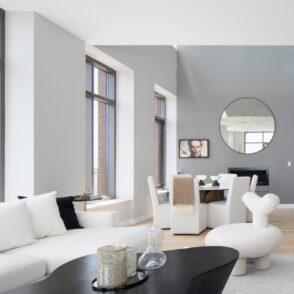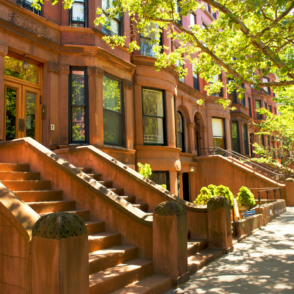NYC residents have long accepted the fact that in order to live in this great city, they have to compromise on space— less space on the sidewalk, less space on the subway, even less space in their home. And they must do this while paying a premium cost. But New Yorkers are purposeful and if they’re willing to compromise on space to live here, why not double down and live in even a smaller space if you can pay less? This is accomplished by many New Yorkers who have turned to the use of temporary walls—or “pressurized walls”, as termed within the industry—to prepare a convertible apartment into a multi-occupancy property. With this setup, you’ll have a roommate to share your space and split the rent.
Temporary walls are a great solution, but before deciding to alter the floorplan of your apartment, there are a few things you need to know. We’ll touch upon the basics of temporary walls, and getting them installed legally, soundly and without complication.
So what are temporary walls?
A temporary wall is exactly as the name implies. It’s the construction of a wall to create sections within an apartment to accommodate a multi-occupancy arrangement. They’re called temporary walls because they don’t integrate into the existing apartment structure—no nails or screws are involved. They’re meant to be installed temporarily and when it comes time to move out, they can be taken down and removed without real damage to the apartment.
Am I allowed to put up a temporary wall in my own place?
The permission to erect temporary walls sits in a gray area. The issue is overseen by the NYC Department of Buildings and it has long been illegal to install floor-to-ceiling walls without a permit from the Department. However, landlords have for years looked the other way, allowing tenants to erect these walls in order to fill their empty units. If your landlord does allow you to put up a wall, it must still be in compliance with general NYC Building Codes, that is, it must not block exit routes, must not interfere with ventilation or sprinkler systems and must not result in the size of any habitable room to be less than 80 square feet. Oftentimes, the broker that you work with will discuss with the landlord whether or not the apartment will allow for this. They will often call these units “convertibles” or “flex units”. But in the end, make sure you get this permission straight from the landlord.
How do I install these walls?
If the landlord approves, they will likely suggest you secure the services of a contractor. There are many companies within the city that specialize particularly in this construction. Because this is accepted as a temporary situation, these companies have in place an agreement where they install the wall for a designated period of time—where you pay the construction fee (anywhere between $700-$2000) and put down a deposit. Upon, expiration of the agreement, either the wall will come down and you receive your deposit or you choose to extend the agreement and pay for more terms. Construction of the wall can be completed in a day—anywhere between 6-8 hours. When it’s time to come down, give the company 3-4 weeks notice.
So what if I’m not allowed to put up a temporary wall?
There are solutions when a landlord does not allow you to put up pressurized walls. They involve:
Though these alternatives don’t give you the full privacy that a pressurized wall may be able to give you, still being able to delineate boundaries within an apartment can make a big difference.
Temporary walls offer a simple solution to finding affordable rental apartments in the city. But there are issues that must be addressed before moving forward with a plan. Understand the accepted practices as you consider this route and first and foremost, speak to your landlord to get their okay before taking any action.


